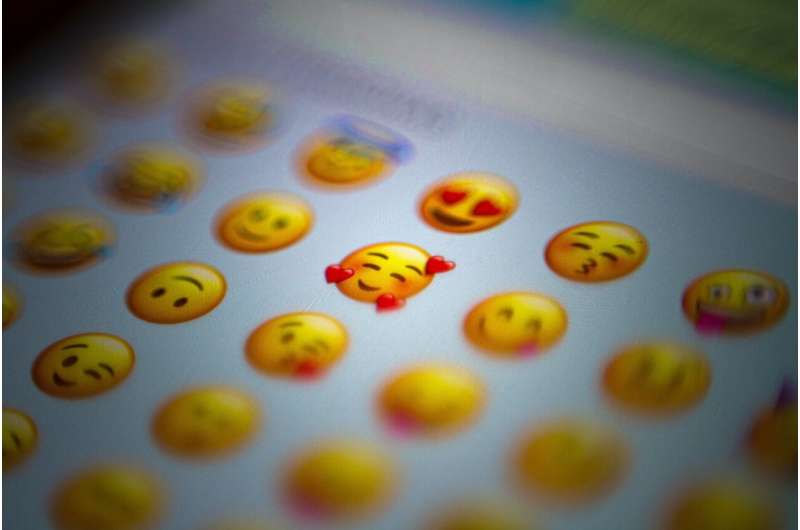This article has been reviewed according to Science X's editorial process and policies. Editors have highlighted the following attributes while ensuring the content's credibility:
fact-checked
peer-reviewed publication
trusted source
proofread
Tracking emotions on social media to predict which posts go viral

It doesn't take a scientist to know that a Facebook post bursting with party popper emojis or angry face symbols gets more reactions and shares than a flat, factual account of a child's graduation or an airline's villainous customer service.
But, University of Maryland researchers trying to understand why posts go viral on social media—including ones with misinformation and conspiracy theories—would like to understand the best methods for tracking emotions on platforms to create the most accurate predictive models.
In a new article published in Science Advances, the team uncovered that when a post expresses highly specific emotions—from anger and love all the way to "kama muta" (Sanskrit for "being moved" or "heartwarming"), wonder, pride and amusement—there is a significant and predictable impact on whether it gets shared. However, tracking broader characteristics of emotions within posts, like the degree to which they were positive or negative, led to less accurate predictions of post sharing.
"There has always been concern about the spread of social media posts," said lead author Susannah Paletz, associate professor at the College of Information Studies and an affiliate at UMD's Applied Research Laboratory for Intelligence and Security (ARLIS). "The purpose of this study was to understand the emotion theories that play into social media sharing."
Co-authors included Ewa M. Golonka, Nick Pandža, C. Anton Rytting and Devin Ellis of ARLIS, Michael Johns of the Institute for Systems Research, Egle E. Murauskaite of the ICONS Project and Cody Buntain of the College of Information Studies.
The team also developed a research method to understand emotions in social media posts, which was recently published in Behavior Research Methods. Both projects are part of the greater Emotions in Social Media UMD project.
Independent judges analyzed more than 4,000 posts on Facebook in Poland and Lithuania for more than 20 emotions—examining the entire spectrum of multimedia content—and then compared different models that drew from three different theories of emotion to predict how many times a post would be shared.
Overall, the models that included specific emotions performed better in explaining sharing behavior on social media compared to models that grouped emotions differently. However, the model that included more than 20 different emotions was the most informative.
Controlling for number of followers and other variables, posts with anger, contempt, love, admiration, cute/kama muta, wonder, pride, sadness, and amusement were associated with an increase in post sharing, whereas sexual attraction and happiness in posts were associated with a significant decrease.
"In other words, as everyone on social media knows, jokes, cute things, amazing things are all shared more," Paletz said.
More information: Susannah B. F. Paletz et al, Emotional content and sharing on Facebook: A theory cage match, Science Advances (2023). DOI: 10.1126/sciadv.ade9231
Susannah B. F. Paletz et al, Social media emotions annotation guide (SMEmo): Development and initial validity, Behavior Research Methods (2023). DOI: 10.3758/s13428-023-02195-1
Journal information: Science Advances
Provided by University of Maryland




















